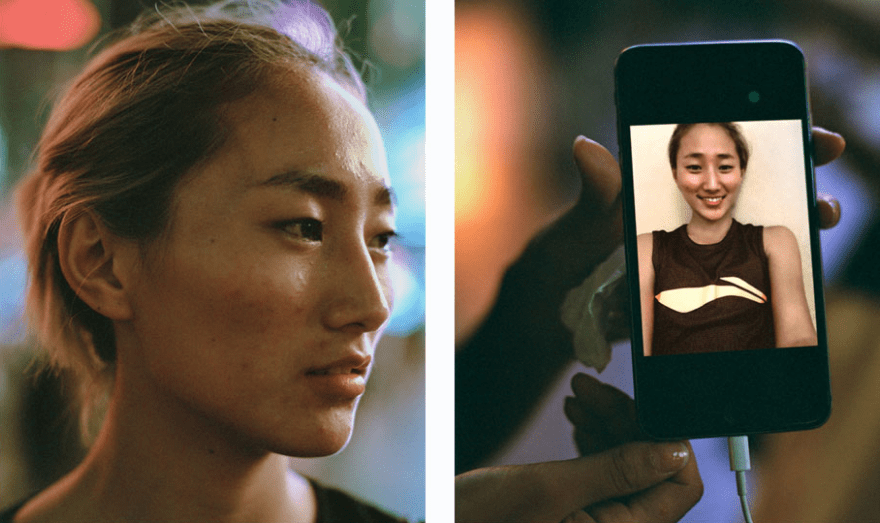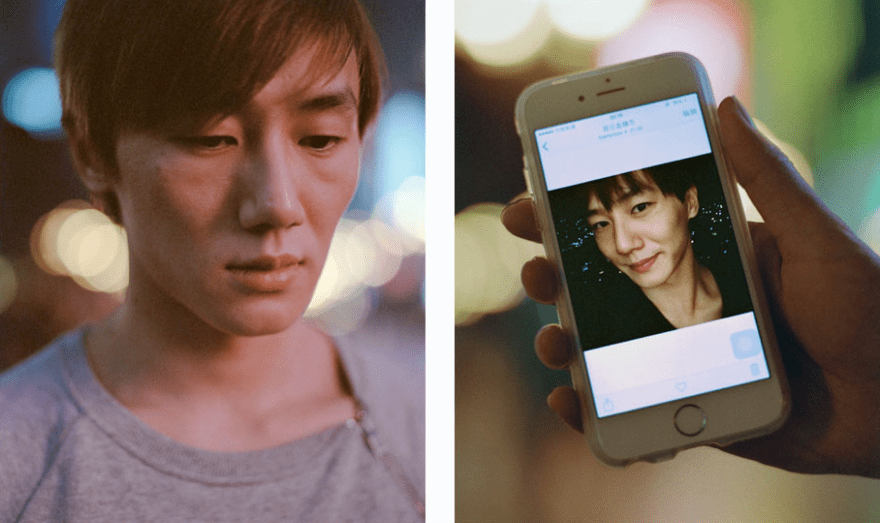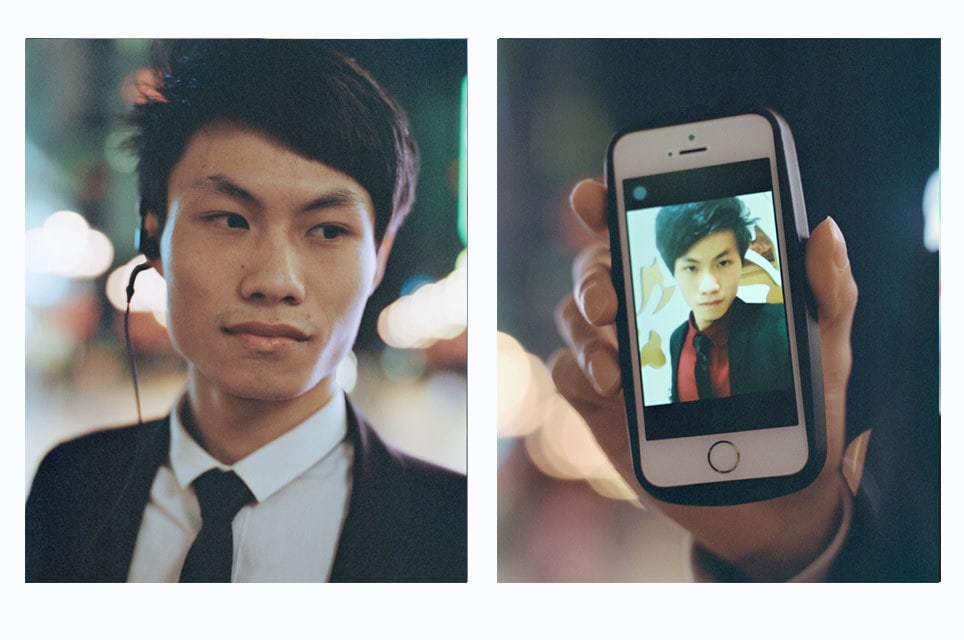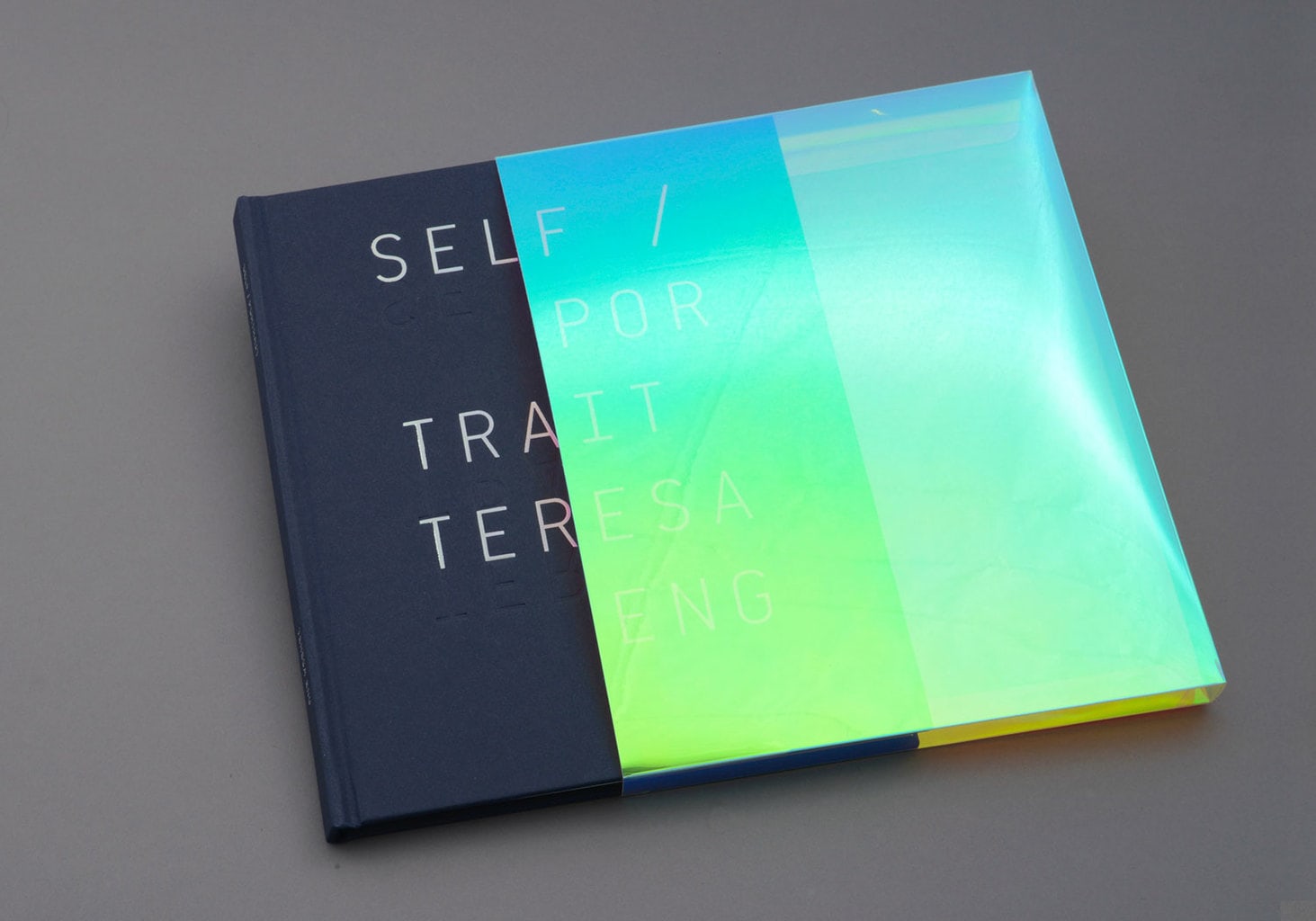Share
Teresa Eng’s Portrait of a Selfie
Self-portraiture is as old as photography. But the proliferation of smartphones gave rise to the selfie – usually defined as a self-portrait take...

Self-portraiture is as old as photography. But the proliferation of smartphones gave rise to the selfie – usually defined as a self-portrait taken with a phone at arm’s length – allowing the first generation of digital natives to leave an indelible mark on the history of photography.
This fact was not lost on Vancouver-native Teresa Eng. Eng received her MA in photography from the London College of Communication in 2009, and through the course of her travels resulting from various exhibitions, prizes and programs, she found herself in China. It was there that she hatched the idea for “Self/Portrait,” a series of diptychs that combined a selfie found on the phones of her millenial subjects with a portrait that Eng shot on medium format film. From there, Eng turned the project into a handsome, self-published book that ought to be in the collection of any serious collector.

Photos by Teresa Eng
Did your time in China lead to the Self/Portrait project?
Yes it did. I participated in an artist-in-residence program in China in 2013 and returned again in 2015. I was struck by the rapid rate of development that was occurring in the country. Villages were being transformed into cities and in turn cities were absorbing the surrounding lands.
I’m interested in Chinese millennials because they’re dealing with such drastic societal and technological changes. Not only are they the first digital natives, they’re also the first generation to be born into a society transitioning into capitalism. I found their outward expression of self very different from the collective identity that their parents and grandparents generation grew up with.
“Self/Portrait” also came about from my own feelings of ambivalence towards the digital revolution. As someone who grew up before the internet, I grapple with aspects social media and privacy.
I’ve encountered reticence from people on the street in China about having their photos taken. What was your experience like of approaching people?
I had assistants who helped translate for me, which was very useful. I think it also helped that I was shooting with medium format camera. For most people, it’s something they haven’t seen before so perhaps it made me look more ‘professional’.

Photos by Teresa Eng
How did you select a selfie from a person’s phone?
I was looking for selfies that showed their individuality or how they wanted the world to see them.
Selfie retouching apps are very popular in Asia (Meitu, etc). In Japan, even street photo booths can exaggerate facial features and smooth skin to a comical degree. What do you make of this?
I didn’t realise these apps existed until I was editing “Self/Portrait”. On one hand it’s pretty amazing to have a mobile version of Photoshop. On the other hand, I am a little concerned that it could create a homogeneous beauty ideal that is neither realistic or genetically possible. I think that media education is key to reducing negative body image issues especially with younger users.

Photos by Teresa Eng
Did you show the subjects their portrait?
Yes.
You chose to use “natural” light from the surrounding signage. Can you talk about your intention in how you wanted to portray the subjects vs. how they wanted to portray themselves?
I’m always watching people when they’re in a place of transition (waiting for the bus or in a queue). I’m interested in that moment of introspection where people are lost in thought.
The use of lighting came about naturally. I used the large LED advertisements that surrounded the commercial shopping centre. It was quite fitting as the lighting reflects mood of consumerism and a generation of technological savvy millennials.
When I started “Self/Portrait”, I had the preconceived notion that all selfies would look the same (self-aware, trying to look cool, cute, etc.). Over time, I realised that the selfie is an anthropological artefact; where details of each individual’s lives, interests and aspirations are revealed. At the end of the day, selfies express what young people have always sought to achieve: define themselves through experimentation whilst feeling the need to belong to a group.
Is a book project the inevitable conclusion of your personal projects?
Not always, it depends on what fits with the concept of the work. However, I do enjoy the intimacy that exists between the book and the reader.

You’ve relied on self-publishing, but this isn’t your ordinary Blurb/Apple book. How much time/resources go into creating a book?
A lot! First there’s the image development and the extended process of editing. I often sit with the images for some time, gradually building a narrative. There there’s a period of time thinking about how the work translates into a book format in regards of sequencing, layout and presentation. I see my books more as objects; every aspect of the design needs to express the concept of the work.
In the case of “Self/Portrait” each diptych consists of how I saw each subject versus how they see themselves. My interaction with them was brief yet their selfie reveals another dimension to who they are and I sought to incorporate this in the book’s gatefold structure. I sourced a Dichroic film, normally used for architectural applications, to be bonded to each clear slipcase in order to provide the book with a feel of the digital revolution. Technically this proved to be very difficult to achieve, but was well worth it for the ever-changing colour and vibrancy that the film brings. To me its mirror-like qualities reflect the question – do selfies show us who we really are or who we want to be?
What other ways do you try to bring exposure to your work (e.g. galleries, social media, traditional PR, etc)
Self-publishing has been a good way of disseminating my work. I’m a member of Caravan, a collective of self-published photographers who share resources and participate in book fairs. I also apply for exhibition open calls and portfolio reviews. Instagram has been useful for finding a new audience, connecting with other photographers, curators, writers and photo editors.


